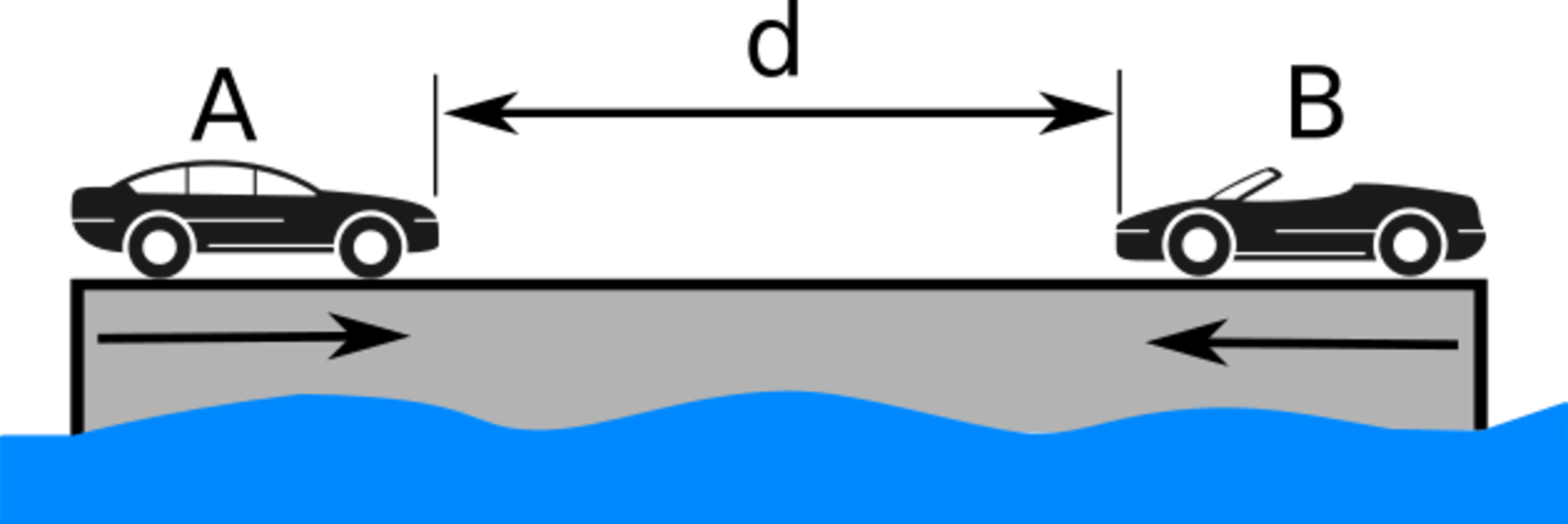Cars colliding on a barge - part II
Prerequisites:
Accelerated motion: If a body moves with a constant acceleration , the distance covered by the body after a certain time is expressed as: and the body reaches the velocity: where is the initial velocity of the body.
The task
A barge of a mass transports two cars A and B of masses and respectively. They are placed at the distance away from each other. They drive off with accelerations and respectively. Each one accelerates until it reaches a constant velocity with respect to the barge. After what time will the two cars collide?
Assumptions: The barge initially at rest. Any resistances are neglected. The cars are treated as mass points. Given: kg, kg, kg, , , , m.

The answer is 3.0625.
This section requires Javascript.
You are seeing this because something didn't load right. We suggest you, (a) try
refreshing the page, (b) enabling javascript if it is disabled on your browser and,
finally, (c)
loading the
non-javascript version of this page
. We're sorry about the hassle.
Considering a movement relative to the barge: a A t A = v and a B t B = v give the times t A = 1 . 5 s for car A and t B = 0 . 7 5 s for car B. It means that at the moment when car B already reached the velocity v , car A still accelerates. The distance covered by car A up to the moment t A can be calculated as:
s A ( t A ) = 2 a A t A 2 = 2 a A v 2 = 4 9 m .
The distance covered by car B by the same time t A is:
s B ( t A ) = s B ( t B ) + v ( t A − t B ) = 2 a B v 2 + v ( t A − t B ) = 8 2 7 m .
The distance left for cars to collide is then:
x = d − s A ( t A ) − s B ( t A ) = 8 7 5 m .
Both cars have the same velocity $v$ after time t A . Therefore they will collide at the point where each of them covered the distance 2 x . Covering the distance 2 x will take the time t x = 2 v x = 1 . 5 6 2 5 s . So the total time after which the cars will collide equals:
t = t A + t x = 1 . 5 + 1 . 5 6 2 5 = 3 . 0 6 2 5 s .